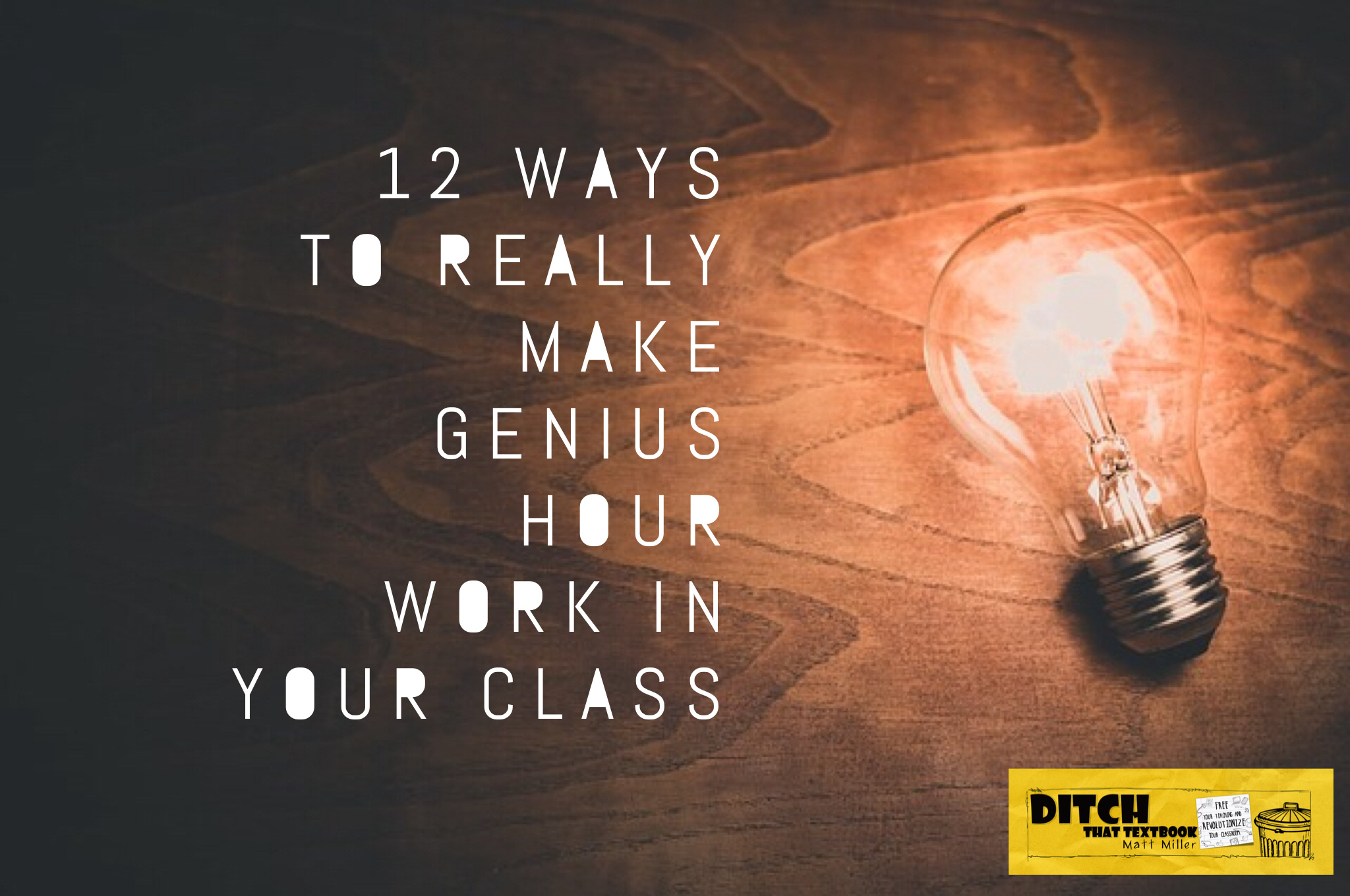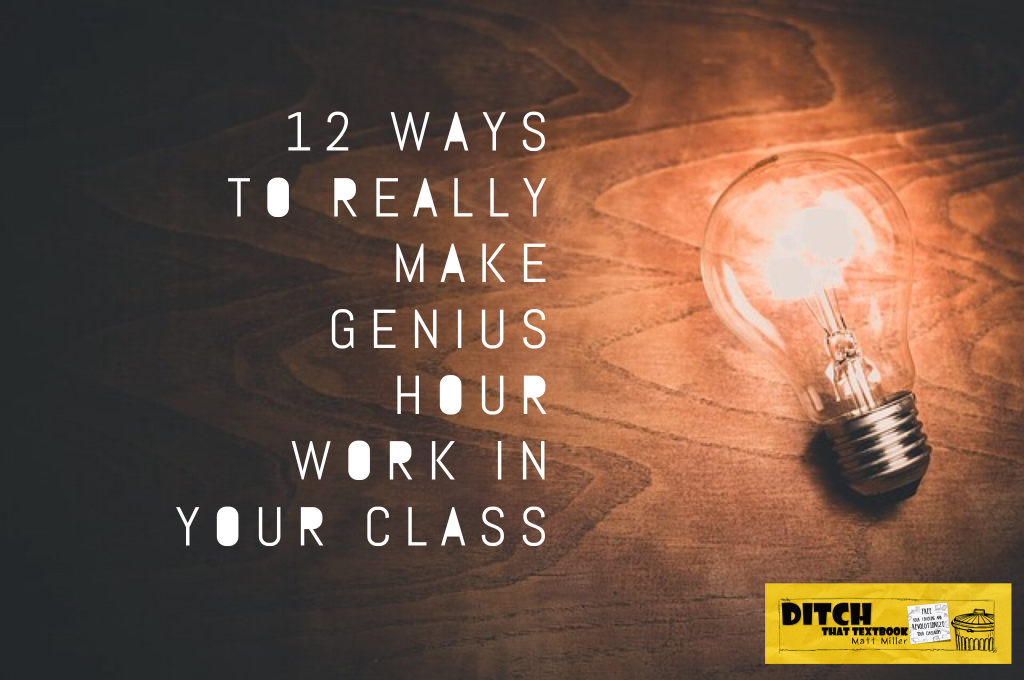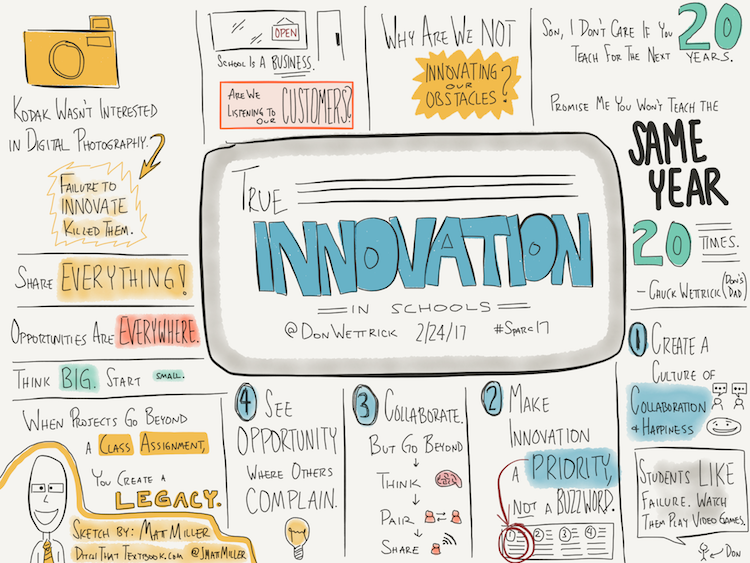

Genius Hour empowers students to do something meaningful with their passions. Here are 12 ideas you can use in the classroom from an expert in innovation. (Public domain image via Unsplash)
Lots of schools and classrooms are making innovation a priority and changing how day-to-day school is done.
Don Wettrick’s students take it to a whole new level.
Don teaches “Innovation Class,” where students take on a project that connects with their passions. In this class, his students have created apps, designed new products and created events. One of his students worked with local government to create a program where low-income families could use their government food benefits to buy from a local farmer’s market.
It’s a class unlike anything you’d see at almost any school. But at heart, it’s driven by the same thing that drives Genius Hour: helping kids pursue what’s important to them and what’s important to the people they serve.
Genius Hour is the idea of giving students 20 percent of their class time to pursue projects related to their passions. The concept is broad and intentionally open-ended, and the results can be phenomenal.
(In the past, I’ve written about reasons to try Genius Hour this school year, ideas to consider in Genius Hour, and tools to try with Genius Hour.)
At a recent conference I attended in Indiana, Don gave a keynote speech on innovation in schools and a breakout session on how to make Genius Hour work. As is the case whenever I hear Don talk, I left feeling completely inspired.
Here’s the sketchnote I did of Don’s keynote on innovation in the classroom (click for full size):
Don has TONS of resources for anyone interested in bringing student passion-driven projects or innovation in general into the classroom. You can find them at:
His breakout session was where the rubber met the road. He didn’t lead a pre-planned workshop. He led a conversation and dropped some serious knowledge bombs.
Here are 12 of my key takeaways from his session on Genius Hour:
1. “Education is a rotary phone. Rotary phones aren’t broken, they’re obsolete. — Naveen Jain” Don mentioned this quote from Jain, a billionaire whose next venture is to harvest minerals from the moon. Don’s class Skyped with Jain — a brilliant mind who they had access to just because they asked. I thought this quote highlighted exactly why we need Genius Hour and classes like Don’s innovation class.
2. “If you try this, it’ll be a miserable failure for the first year.” Don’s statement about starting Genius Hour or an innovation class was actually encouraging to me. My students did Genius Hour for a year and I thought it was a mess. Turns out that’s normal! Don said a big hurdle is battling this mentality in students: “What do I need to do today to get an A tomorrow?” A culture shift is necessary to create success.
3. Watch the Dan Pink TED Talk. Don mentioned this fantastic TED Talk, “The puzzle of motivation,” in which Dan Pink describes three driving factors in motivation: mastery, autonomy and purpose. I remember listening to the audio version of this TED Talk for the first time. I literally had to stop my car, pull out a notepad and scribble furious notes. It was that ground shifting. (If you’ve seen it, it’s worth another watch!)
4. How should we spend our time in class? Don provided this framework as a suggestion:
This made sense to me. No longer do we need to fill our students’ heads with knowledge when it’s just a Google search away. This puts the idea of “What can you do with what you’ve learned” into practice.
5. “Most students don’t hit the ground running.” I’ve heard Don say in podcasts and in presentations that many of his students start his innovation class chasing grades. How does he break them of that?
6. How do you do Genius Hour in elementary school? Don says his favorite time to incorporate Genius Hour is in elementary school. Middle school is OK. Ideally, high school isn’t the best and is too late. Elementary-school students aren’t too young. They’re primed for Genius Hour, and the elementary classroom is built for it.
For elementary students, Minecraft is the gateway to innovation, Don says. When they use it, they create. They collaborate. They use problem solving. All of those 21st Century skills are in play.
Don suggests pitching the idea to students. Then, tell them you’re skeptical (even if you’re not). “I don’t know if there is educational value in this,” you tell them. Then, they convince you why it supports education and the standards.
You don’t know how to do Minecraft? That’s OK, Don says. They do. Let them teach you. Then, let them split into teams and build villages together.
7. “The greatest tech at our school is LOTS of whiteboards.” Don and his students do their best brainstorming with whiteboards. Walking around opens brain pathways. Don’s students have whiteboards on wheels. They’ll walk around the school and roll a whiteboard with them. It’s a mobile brainstorming session playing on the brain science — physical activity stimulates good ideas!
8. Don described the “gold standard of innovation time” — the “collect and connect” activity. Here’s how it works:
Ask, “What are you passionate about?” If that doesn’t generate discussion, it’s because students don’t think it’s cool to be passionate about anything. You’ll generate discussion if you ask instead, “What do you hate?”
Brainstorm ideas. Write them all down without judging. Then, when you’re done, tell them, “Now double the list.” If you had 20 ideas, make it 40.
When Don does this and they’re done brainstorming, he’ll say: “Connect two things and you have a great idea. Connect three and you’re unstoppable.”
This is how they generate ideas for projects. One class combined these three ideas:
They took these three seemingly disconnected ideas and innovated. They created a coffee house at the school run by students with Down’s Syndrome. The coffee was sourced through a local coffee shop.
Students got to know the students with Down’s Syndrome better. Coffee house patrons were more alert in class. And the local coffee shop got a boost.
9. “Don’t be afraid of quitting.” Students should have more freedom to leave a project when it isn’t working or if they’re not passionate about it anymore, Don said. When you fundamentally hate an idea for a project, jump ship and try something new.
10. How do you bring those great ideas into action? Don shared the “ROTH IRA” method:
11. Set deadlines. Produce something every two weeks. Don tells his students: You have all the time in the world. But saying that they’re going to pursue a single project all year is a recipe for procrastination and underachievement. “Micro it. Chunk it,” Don says. Set a short deadline and produce results. We don’t need as much time as we think.
12. “You can be in Indiana and have access to practically anyone.” Don’s students don’t need to be in a major megalopolis to make connections to experts that can mentor them. Don’s class Skyped with the aformentioned Naveen Jain, who told them, “If your idea isn’t big enough, you’re not trying hard enough.” Once, they were curious about the conflict in Gaza. Within a couple days, they Skyped people on both sides of the issue into their class. They also connected with Tim Ferriss, author of “The 4-Hour Workweek”, who inspired them and gave them suggestions. This all happened just because they asked.
[reminder]What are your best strategies for using Genius Hour in the classroom? What has been your experience with it?[/reminder]
For notifications of new Ditch That Textbook content and helpful links:
Interested in having Matt present at your event or school? Contact him by e-mail!
Matt is scheduled to present at the following upcoming events:
[getnoticed-event-table scope=”upcoming” max=”15″ expanding=”false”]
Session expired
Please log in again. The login page will open in a new tab. After logging in you can close it and return to this page.
[…] Resource: 12 ways to really make Genius Hour work in your class […]
[…] or PowerPoint is perfect if your next lecture is about recycling ideas, or the creative process.” Ditch that Textbook have linked these to a page offering ’12 ways to really make Genius Hour work in your […]
Another guru of 20Time is Kevin Brookhouser. Anyone wanting to talk to Kevin about genius hour can join in on a conversation on Thursday, March 9. For more info and to register:
http://www.edchatinteractive.org/upcoming-seminars/the-20time-project-with-kevin-brookhouser
[…] 12 ways to really make Genius Hour work in your class | Ditch That Textbook […]
I have been reading a bit about Genius Hour, but all the articles seem to be written by people at the middle or high school levels. They all say it is best at elementary, but I have not found good articleslltrticle or books about how to actually set it up and running it in an elementary class. I am am tech Integrator and see my students once in six to eight days. I really want to have students do this, but really don’t know how to get started. Mine craft is not an option since we have Chromebooks.
Does anyone have any ideas of how to use this in an Algebra classroom?